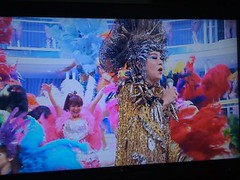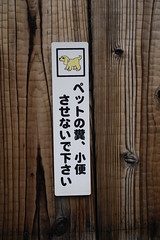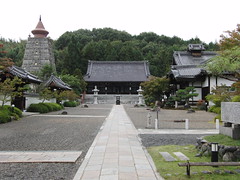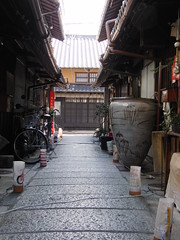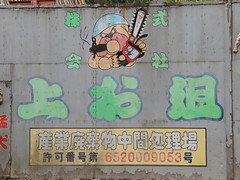ニホンザル
Japan has its own native species of monkey, the Macaca fuscata, commonly known as the Japanese macaque, or, in Japanese, the nihonzaru ("Japan monkey"). A subspecies, the Macaca fuscata yakui, is confined to the island of Yakushima.
Japanese macaques are 50-60cm in body length and weigh about 11kg. They range in color from yellowish brown, to brown, to gray. They have a pink face and a short stumpy tail.
Males and females of the species are distinguished by several traits such as size, the males being a little bigger; lifespan, the males living 5 or 6 times longer than the females, who usually live only about 6 years; and habitat, the males being ground-based while the females are tree-based.
The estimated nationwide population of the Japanese macaque is one million. They are found in almost every part of Japan except Hokkaido.
Japanese macaques are not endangered, being on the "least concern" end of the endangered scale. They have natural predators such as dogs, raccoon dogs and hawks. They are also hunted when they threaten human crops. An estimated 100,000 are killed every year.
Because of their pest value, feeding monkeys in Japan is strongly discouraged. The above photo is a sign in the resort town of Hakone, and says えづけ禁止 or "Feeding prohibited."
© JapanVisitor.com
Like this blog? Sign up for the JapanVisitor newsletter
Yahoo Japan Auction Service
Japanese Friends
Tokyo Apartments Search
Japan Job Search
Rough Guide To Japan
Tags
Japan
monkey
macaque
Yakushima
Japan has its own native species of monkey, the Macaca fuscata, commonly known as the Japanese macaque, or, in Japanese, the nihonzaru ("Japan monkey"). A subspecies, the Macaca fuscata yakui, is confined to the island of Yakushima.
Japanese macaques are 50-60cm in body length and weigh about 11kg. They range in color from yellowish brown, to brown, to gray. They have a pink face and a short stumpy tail.
Males and females of the species are distinguished by several traits such as size, the males being a little bigger; lifespan, the males living 5 or 6 times longer than the females, who usually live only about 6 years; and habitat, the males being ground-based while the females are tree-based.
The estimated nationwide population of the Japanese macaque is one million. They are found in almost every part of Japan except Hokkaido.
Japanese macaques are not endangered, being on the "least concern" end of the endangered scale. They have natural predators such as dogs, raccoon dogs and hawks. They are also hunted when they threaten human crops. An estimated 100,000 are killed every year.
Because of their pest value, feeding monkeys in Japan is strongly discouraged. The above photo is a sign in the resort town of Hakone, and says えづけ禁止 or "Feeding prohibited."
© JapanVisitor.com
Like this blog? Sign up for the JapanVisitor newsletter
Yahoo Japan Auction Service
Japanese Friends
Tokyo Apartments Search
Japan Job Search
Rough Guide To Japan
Tags
Japan
monkey
macaque
Yakushima












